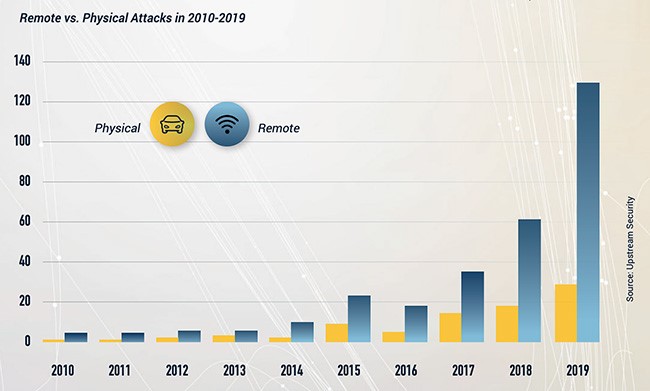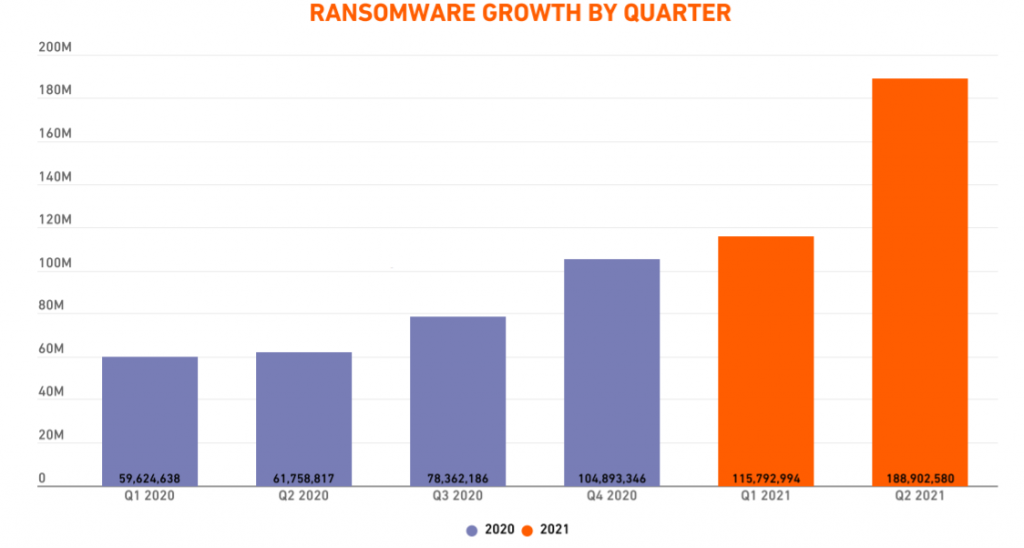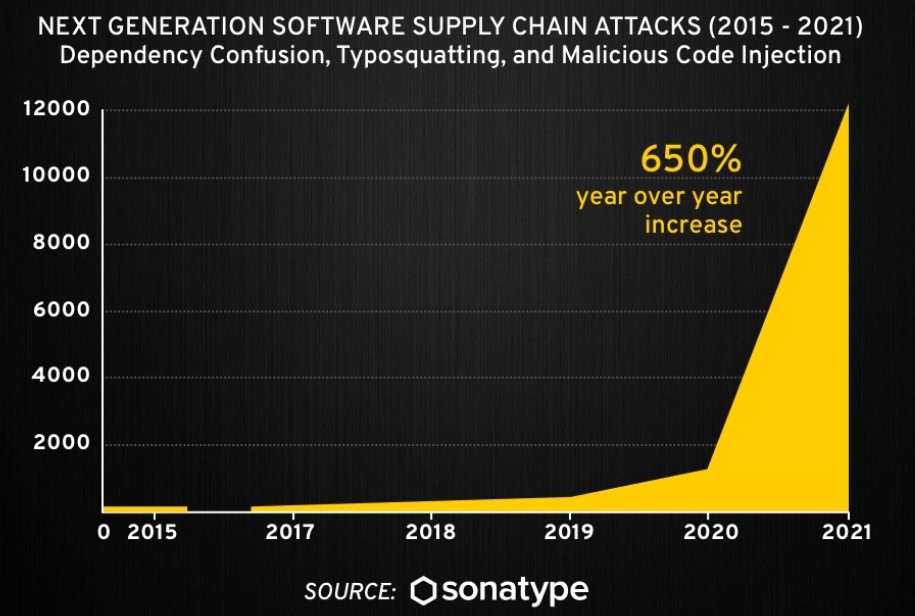Ransomware attacks, data breaches, cloud based attacks, attacks on crypto exchanges, cyber security issues associated with remote work and what not. We have seen all that and much more in 2021. What’s in store for us in 2022? Do we experience more of the same in 2022 or see some new cybersecurity trends dominate the cybersecurity industry? That is exactly what we will find out in this article.
In this article, you will learn about ten futuristic cybersecurity trends that will dominate in 2022.
- Top 10 Cybersecurity Trends For 2022
- 1. Automotive Hacking
- 2. Passwordless Authentication
- 3. Highly Targeted Ransomware Attack
- 4. Geo-Targeted Phishing Attacks
- 5. Cyberwarfare
- 6. Mobile Devices as Attack Vectors
- 7. Rising Supply Chain Attacks
- 8. Zero Trust Goes Mainstream
- 9. Isolated Operational Technology Systems Will Be The New Target
- 10. Growing Remote Work Security Concerns
Top 10 Cybersecurity Trends For 2022
Here are ten cybersecurity trends you should keep an eye on in 2022.
1. Automotive Hacking
As the number of driverless vehicles on the road keeps growing, we will see them get attention from hackers. This will challenge automotive manufacturers to design vehicles with security in mind. Securing driverless cars won’t be easy considering the sophisticated technology involved and lack of expertise in that domain. Security professionals will have to actively look for and patch security vulnerabilities that could be exploited by hackers. Unpatched security loopholes in smart vehicles can put the lives of drivers at risk as they are left on the mercy of cybercrimminals.

2. Passwordless Authentication
We all know that passwords are not the safest user authentication method. Despite this, most businesses still use them. What’s even worse is that their employees don’t follow password best practices, which puts them at a higher risk. In fact, a vast majority (81%) of data breaches took place due to weak passwords.
In 2022, we will see more and more businesses switch to passwordless authentication methods. This will be a huge breakthrough for the cybersecurity industry. Businesses have long been stuck with passwords, multi factor authentication or are experimenting with safer authentication methods. Passwordless authneticaiton is here to change all that..
3. Highly Targeted Ransomware Attack
According to ransomware statistics, the number of ransomware attacks surged from 115.8 million in the first quarter of 2021 to 188.9 million in the second quarter of 2021. This made 2021 the worst year as far as the number of ransomware attacks are concerned. Despite this, businesses makes mistakes when

Ransomware attackers have shifted their focus away from businesses and have started launching ransomware attacks targeting critical infrastructure such as grid stations and pipelines. We will see more of that in 2022. Then there is a ransomware as a service trend which is slowly but surely gaining momentum.
4. Geo-Targeted Phishing Attacks
Just like ransomware attacks, phishing attacks have evolved over the years. Today, phishing attacks are more personalized, geo-targeted and localized than ever before. Experts are predicting an exponential rise in the number of phishing attacks in 2022. This could mean double trouble for cybersecurity professionals who not only have to minimize the number of phishing attacks but will also have to deal with the sophistication and hyper targeted nature of phishing attacks. Thankfully, there are many ways to neutralize phishing attacks. Businesses must invest in security awareness programs to prevent their employees from falling victim to these attacks.
5. Cyberwarfare
Global tensions are at an all time high. This gives superpowers and their adversaries an opportunity to indulge in cyberwarfare. Many countries will use cyber espionage as a weapon against their enemies. With more than 50 elections set to take place in 2022, we will see power change hands. This gives hackers a great opportunity to target those events so you should expect to see an uptick in the number of cybersecurity attacks as the elections approaches.
6. Mobile Devices as Attack Vectors
With a majority of users using their mobile devices to shop online, hackers can easily target them when they are purchasing items from their favorite online store. Once they manage to compromise a mobile device, they start using it as an attack vector. This provides them with the ability to conduct fraudulent transactions and run away with the money without getting tracked. Businesses must prioritize application security to mitigate the risk of such attacks.
7. Rising Supply Chain Attacks
Do you think that you are safe just because you have state of the art security systems? If yes, then you are not alone. Most businesses think the same way. Sadly, they don’t know much about supply chain attacks, which is gradually becoming more dangerous with each passing day. Supply chain attacks enable hackers to infiltrate your systems through a third party supplier. Hackers don’t have to target your business anymore, they can compromise a supplier and fulfill their malicious desires..

8. Zero Trust Goes Mainstream
Zero Trust model was developed in 2010. Since then, we have seen many companies develop their own version of the zero trust framework. Fast forward to today and we have reached a point where zero trust is no longer an option but has become a necessary requirement. We will see more and more businesses adopt a zero trust approach to protect their network.
9. Isolated Operational Technology Systems Will Be The New Target
Operational technology systems are more vulnerable to cybersecurity attacks because they mostly run older versions of operating systems. Even if the updates were available, the system administrators are also reluctant to install updates even if they are available because it can cause system failure. This makes these operational technology systems a soft target for cybercrimminals. That is why we see most ransomware attacks targeting industries that use an operational technology system such as health care and manufacturing.
10. Growing Remote Work Security Concerns
Remote work is here to stay and so are the security concerns associated with it. According to a Kaspersky report, there has been a drastic increase in the number of brute force attacks on remote desktop protocol since March 2020. Similarly, there is a spike in the number of business email compromise and phishing scams. We will see more attacks targeting communication and collaboration tools in 2022 as they are necessary to making remote work possible.

Which cybersecurity trends will create the biggest splash in 2022? Share your thoughts with us in the comments section below.





Add comment